There are countless wonderful dive spots around the world - some small, some big, some famous, some very hidden. We want to know them all. Get inspired by these 5 famous dive spots to put on your bucket list and share YOUR most favourite spot in a comment below. You might be lucky and win a Tough! TG-4 Fisheye Kit! Good luck!
1. Komodo National Park, Indonesia
Being part of the so-called Coral Triangle, the Komodo National Park contains some of the richest marine biodiversity on earth and is hence not only perfect for any kind of diving but also a dream come true for underwater photographers. With a total area of around 1.700 square kilometers it consists of various islands. The UNESCO World Heritage Site provides you with spectacular views of untouched coral reefs, big fish hunting actions and pelagic fish wherever you look. Reefsharks, hammerhead sharks or barracuda – you can find them all if you are lucky. If you are looking for mantas, Manta Alley is the place to go. The tiny rocky island in the southern part of the park is great for spotting these great animals from September to January. But Komodo is also great for searching the small stuff. Cannibal rock, for example, is a fantastic place for macro diving and taking shots of beautiful nudibranchs or frog fish. Though Komodo is so diverse, diving there is mostly reserved to experienced divers as the currents are usually very strong. Still, there are some quieter spots you may visit as a beginner. Moreover, it can often make you feel like you’re completely alone in that magical underwater world – isn’t that wonderful?
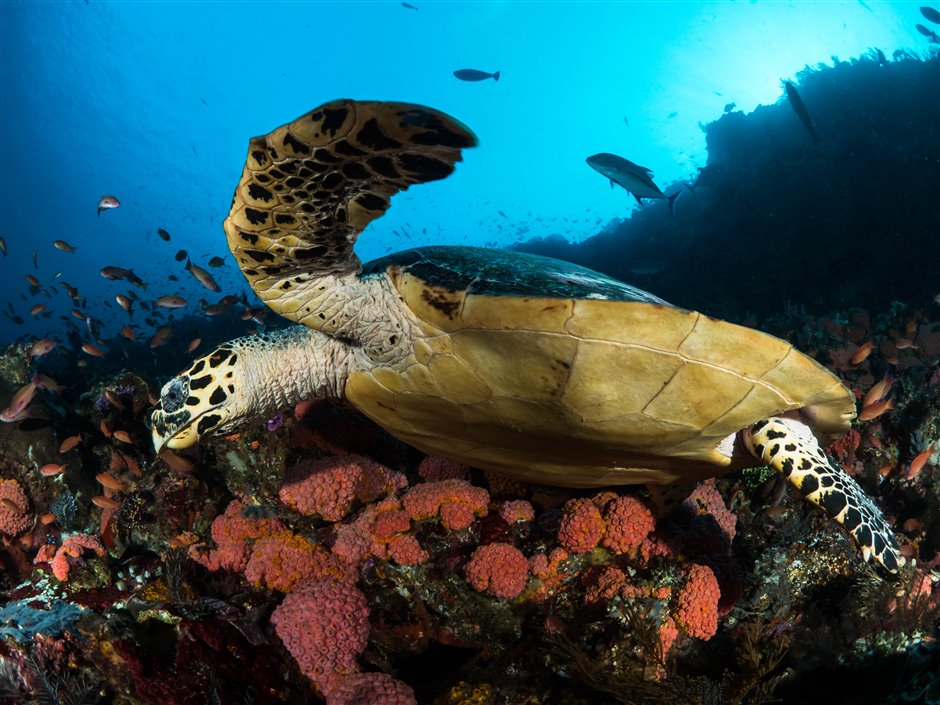
Photo: Olympus Visionary Ann Karin Matberg
2. Great Blue Hole, Belize
Of course we have to name it: The Great Blue Hole is certainly the most famous dive site in Belize and has been ranked as one of the best diving spots in the world for years. The giant submarine almost perfectly circular sinkhole was originally formed as a limestone cave thousands of years ago when the sea level was much lower. Its roof collapsed as the ocean began to rise and the cave was flooded. The Great Blue Hole is part of the larger Belize Barrier Reef Reserve System which was declared a UNESCO World Heritage Site. The shallow waters surrounding the hole are rich in marine life with dense coral growth. While you can surely explore these reefs as a diver or even snorkeler, you should be brave and dive into the deep. The inside of the Blue Hole is a drastic contrast to the outside world and should rather be explored by experienced divers. As the light is very much limited by the walls, you will find a dim atmosphere that will sometimes make it hard to keep your orientation. Combined with a poor water circulation and sometimes very low oxygen levels, living conditions for marine life are limited. Still, there are more than enough reasons to dive there, one of them being the kind of dive itself. As you approach it like on a wall dive, the whole experience is not only challenging, but also exciting and gives you a feeling of cave diving. You still find areas of crystal clear water and may be lucky to encounter marine species like the Caribbean Reef Shark. Temperature drops, tall stalagmites and stalactites and some scary-looking fish will make your trip unforgettable – and your pictures even more special.
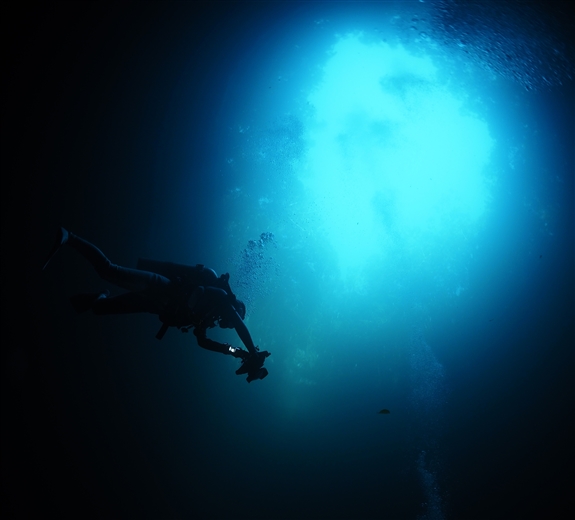
3. Barracuda Point, Sipadan Island, Malaysia
Another mecca for diving and underwater photography is Sipadan Island in Malaysia. Located off the east coast of Malaysia, this destination is perfect for experienced divers who love large animals, wall diving and drift dives. With its tropical scenery, Sipadan Island is a magnet itself, but it is below the surface where the real magic happens. Large schools of jacks, bumphead parrotfish and plenty of barracudas await you at one of the world’s “big fish capitals”. Barracudas are also the name source for Barracuda Point, one of the most popular dive sites of this paradise island. Thousands of barracudas will make their way through here in a tornado-like formation. And they are not alone. Reef sharks or hammerhead sharks are also regularly patrolling the area. Take your time and explore the wealth of macro life at the wall going down to 22 meters deep. Enjoy strong currents and drift diving to find yourself in the coral garden or simply gaze at the large fish shoals merging. If you’re into turtles, Barracuda point is also the place to go as it seems to be the center of the turtle universe. You may be lucky to get some nice close-ups of these beautiful animals without disturbing them. In total, a perfect combination!
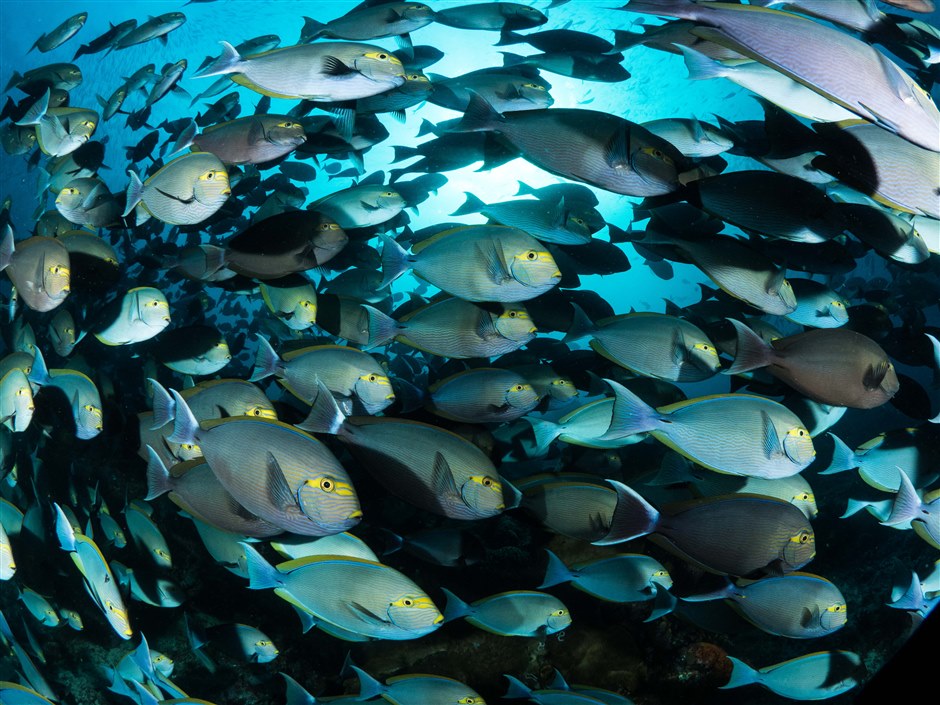
Photo: Olympus Visionary Ann Karin Matberg
4. Blue Corner - Palau, Micronesia
The island-country Palau in the western Pacific Ocean contains around 340 islands and belongs to Micronesia. Situated in the southwest of Palau’s capital island Koror, the so-called “Blue Corner” is said to be the most beautiful diving spot of the region and one of the best in the world. It is a fantastic place for nearly every kind of underwater photography – but a challenge for every diver. While it can potentially also be visited by beginners during very high or very low tide, Blue Corner is definitely a drift dive paradise as the currents can change in any given moment and in any direction during incoming tide. After all, reef hooks were invented in Palau. Due to these strong currents, microorganisms from the very deep are brought to the reef of Blue Corner and form the basis for the food chain of all the organisms and animals living at this magical spot. Especially during Full Moon and New Moon, a lot of plankton is flushed from the open ocean towards the reef. It is during that time of the month when you can discover the Blue Corner at its best. A huge variety of reef fish, moray eels and large groups of moorish idols and butterflyfish will make their way through the corals. Huge shoals of barracudas, snappers and mackerels will not only complement this picture but also attract big fish that are absolutely worth taking a picture of. Tunas, big groupers and many kinds of reef and oceanic sharks or even whale sharks might be observed. Ray lovers don’t have to miss out either as manta or eagle rays can also be spotted at this wonder of nature.
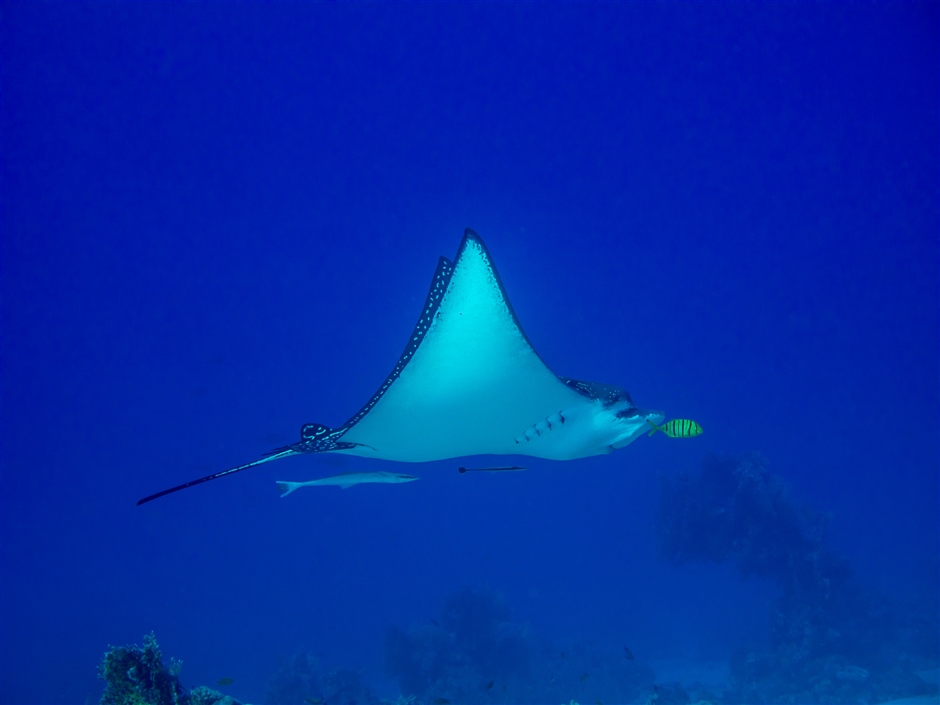
Photo: Olympus Visionary Ann Karin Matberg
5. Thistlegorm - Red Sea, Egypt
If you are into wreck diving, Thistlegorm in Egypt could be a place for you. Situated at the western coast of the Sinai Peninsula and around 40 kilometers from Sharm El Sheikh, it is the most popular wreck diving spot in the Red Sea – and arguably the world. The HMS Thistlegorm, a 125 meters long British army freighter, has been resting around 30 meters deep in the sandy sea bed ever since it sank in 1941. A dive trip to this wreck requires a little bit of time and effort, but is absolutely worth it as it puts you in a time capsule to many, many years ago. Dive around Wellington boots, motorbikes or Bedford trucks, many still with rubber tyres and glass windows intact. Though marine life is limited and there is no coral growth inside the holds, you can see a few sweepers and – how fitting – soldierfish around. Amindships, however, you may find many lionfish and blackspotted sweetlips taking shelter from the currents. And making your way back up and across the top of the Thistlegorm, you can encounter a quite rich marine life. Large schools of teira batfish might follow you as you encounter crocodilefish on the deck floor or take pictures of hawksbill turtles. In sum, Thistlegorm is the place to be for wreck diving – but not necessarily for loners. Due to its popularity, you might end up in a real “rush hour” dive, so plan your trip well and enjoy the off-seasons.
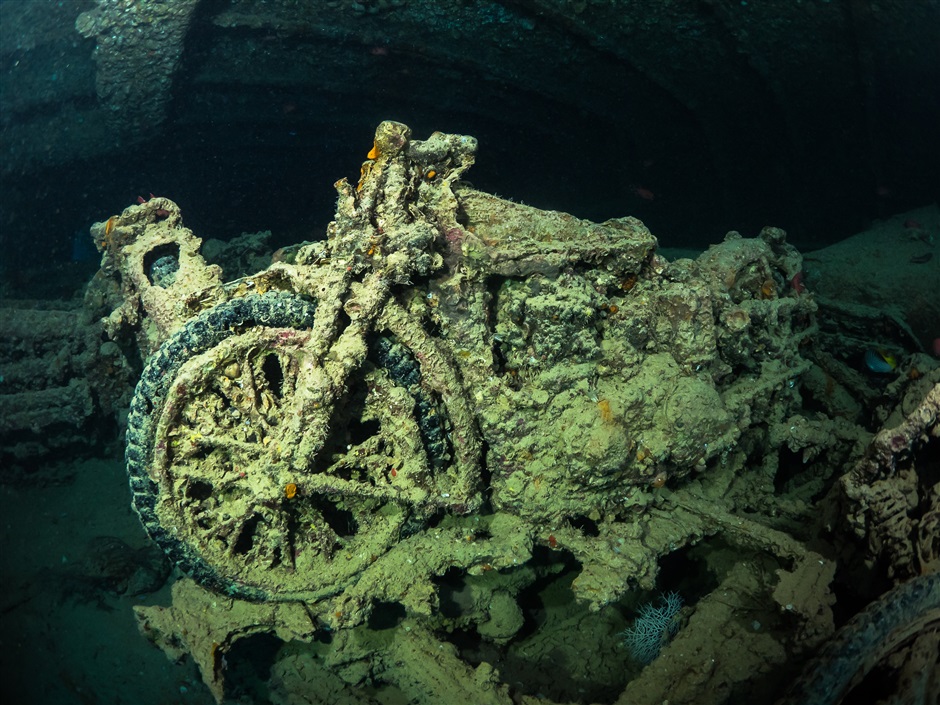
Photo: Olympus Visionary Ann Karin Matberg
Now it’s your turn:
You want to take part in our Underwater World raffle? Simply follow the instructions below and have the chance to win a Tough! TG-4 Fisheye Kit!
- Step 1: In case you are not signed up yet, quickly click here, register and refresh your browser or click here after having signed up. In case you are already signed up, log in here and you will get back to this page.
- Step 2: Comment under this blog post (until the 13th of July 2017; 23:59) and answer the question "What is your favorite dive spot?”
- Step 3: Patiently wait for the winner's announcement on the 18th of July, 2017.
Please view our Terms & Conditions
Comments
My favourite dive spot are the Maldives :)
I like Bali
I like Northern Norway.
Ribbon Reefs Cairns
my shower
Lake Finland
Sadly I don't dive (yet!), but having just returned from swimming with sea turtles of the Southwestern coast of Turkey, that's where I would go!
My favorite has always been at my parents' summer cottage at Lake Loituma.
So far Diver's Heaven, Balicasag Island, Philippines
I have yet only dived a few places, but I was once in waters out of Turkey - that was a great experience ! Would love love love to do more!
Lakes in Finland
Hin Daeng in the Andaman Sea (Tjailand). Here you can be lucky to dive with whalesharks, manta rays etc. Great diving spot
Mwldives
Maldives
Another unexplored world by me! Crete island , Greece
Show more comments (14)